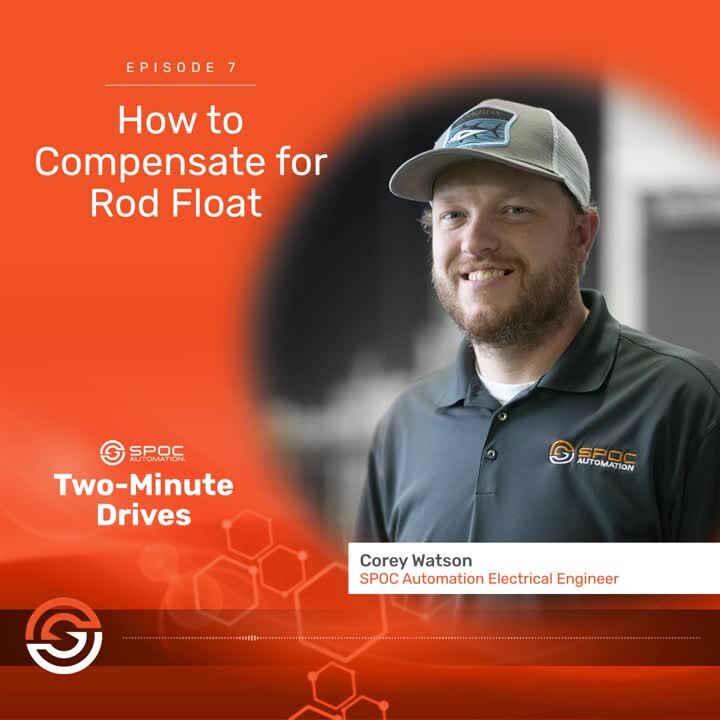

My name is Cory Wesson and I’m an electrical engineer here, at SPOC Automation. I’ve been with SPOC since 2013. Today, I want to talk to you about rod float.
Rod float occurs on a pumping unit when the polish rod falls slower than the downward motion of the horse head, thus creating separation between the polish rod connector and the carrier bar. This usually happens when you are pumping in heavy crude, or we have a lot of friction due to paraffin and wax build-up.
This causes two issues. The first is poor pump efficiency. Over time that means a lot of lost production and wasted money. And, two, it causes mechanical stress on the unit every time the polish rod connector and the carrier bar come back into contact with each other. The result is a lot of vibration and hammering that shorten the life of our equipment.
So, how do we mitigate that? The first solution is to use a variable frequency drive. Using the VFD, we can slow down our strokes-per-minute to eliminate the separation between the carrier and the polish rod connector.
At SPOC, we also have the Revelation controller, which gives us seven segments of speed control. We can adjust the speed in the segment in which the polish rod and the carrier bar become disconnected and slow down only in that portion of the stroke, thus eliminating float.
Thanks for watching the video. Have a great day.